Discover the top things to do in Bryce Canyon National Park! Explore the best hikes, viewpoints, and tips to help you plan the perfect visit.
Bryce Canyon National Park is one of the most breathtaking and unique landscapes in the United States. Known for its towering hoodoos—those iconic, spire-shaped rock formations—this park offers stunning views, incredible hikes, and countless opportunities for photography. I visited Bryce Canyon in December, and the experience was nothing short of magical. A light dusting of snow covered the hoodoos, adding a dreamy contrast to the park’s vibrant red and orange tones.
Whether you’re planning a summer road trip or a quiet winter getaway, this guide will help you make the most of your visit. From the best viewpoints and hiking trails to practical tips for visiting during different seasons, here’s everything you need to know about exploring Bryce Canyon National Park.
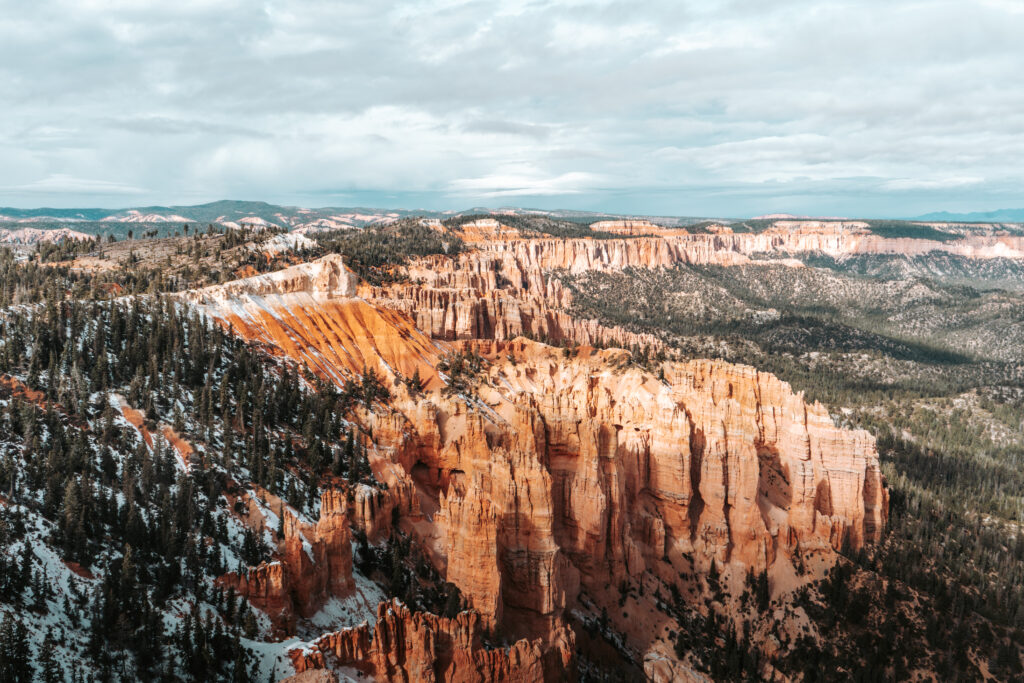
Bryce Canyon National Park Guide
Why visit Bryce Canyon?
Bryce Canyon National Park is a destination like no other, famous for its mesmerizing landscape of red rock spires called hoodoos. These unique formations, shaped by millions of years of erosion, create a dramatic and otherworldly scene that captivates visitors year-round.
One of the main reasons to visit Bryce Canyon is its accessibility. Unlike some national parks that require strenuous hikes to see their best views, Bryce offers incredible vistas right from easily accessible viewpoints. Whether you’re a casual visitor looking for scenic overlooks or an avid hiker ready to hit the trails, there’s something for everyone.
In winter, Bryce Canyon takes on an even more magical appearance. When I visited in December, a light layer of snow blanketed the hoodoos, creating a striking contrast against the red and orange rocks. It’s a photographer’s dream and a peaceful escape for those looking to avoid summer crowds.
Beyond the scenery, Bryce Canyon also offers opportunities for stargazing, with some of the darkest skies in the country. It’s even designated as an International Dark Sky Park, making it perfect for night photography and spotting constellations.
What are Hoodoos?
Hoodoos are tall, thin spires of rock that rise dramatically from the ground, creating Bryce Canyon’s iconic landscape. These formations are sculpted over millions of years through a combination of erosion and weathering caused by wind, water, and ice.
What makes hoodoos so unique is their irregular shapes, which range from slender towers to bulbous, mushroom-like tops. The process starts with frost-wedging, where water seeps into cracks in the rock, freezes, and expands, gradually breaking the rock apart. Over time, softer rock erodes faster than harder layers, leaving behind the unusual pillars we see today.
The area also has deep cultural significance, as it was once inhabited by the Southern Paiute people who viewed the hoodoos as “legend people” turned to stone. Hiking through the amphitheater almost feels like walking through an ancient, mystical city frozen in time.
Bryce Canyon is home to the largest concentration of hoodoos in the world, making it a geological wonder you won’t find anywhere else. Their vibrant red, orange, and pink hues, combined with their intricate shapes, make them a photographer’s dream!

Best Hikes in Bryce Canyon National Park
Bryce Canyon offers some of the most scenic and accessible hikes in the United States. Whether you’re looking for a short stroll or a longer adventure, the trails here allow you to experience the park’s iconic hoodoos up close. Below are the best hikes in Bryce Canyon, including the 8-figure combination hike—a must-do for anyone wanting the ultimate Bryce experience!
Navajo Loop Trail
Distance: 1.3 miles (2.1 km) round trip
Difficulty: Moderate
Highlights: Wall Street, Thor’s Hammer, and Two Bridges
The Navajo Loop Trail is often considered the crown jewel of Bryce Canyon National Park, and for good reason. It’s one of the most popular hikes, offering a short yet unforgettable adventure that takes you straight into the heart of the Bryce Amphitheater.
This trail is perfect for anyone looking to experience the park’s iconic hoodoos up close without committing to a long trek. Despite its relatively short distance—1.3 miles (2.1 km)—it delivers dramatic landscapes, fascinating geology, and unique rock formations that tell a story millions of years in the making.
The trail begins at Sunset Point, one of the most scenic viewpoints in the park, and quickly descends through steep, winding switchbacks. As you make your way down, you’re surrounded by towering rock walls, giving you a sense of scale and awe that can’t be appreciated from above.
Hiker’s tips // Remember that everything that goes down, must eventually come back up… the climb back is quite strenuous.
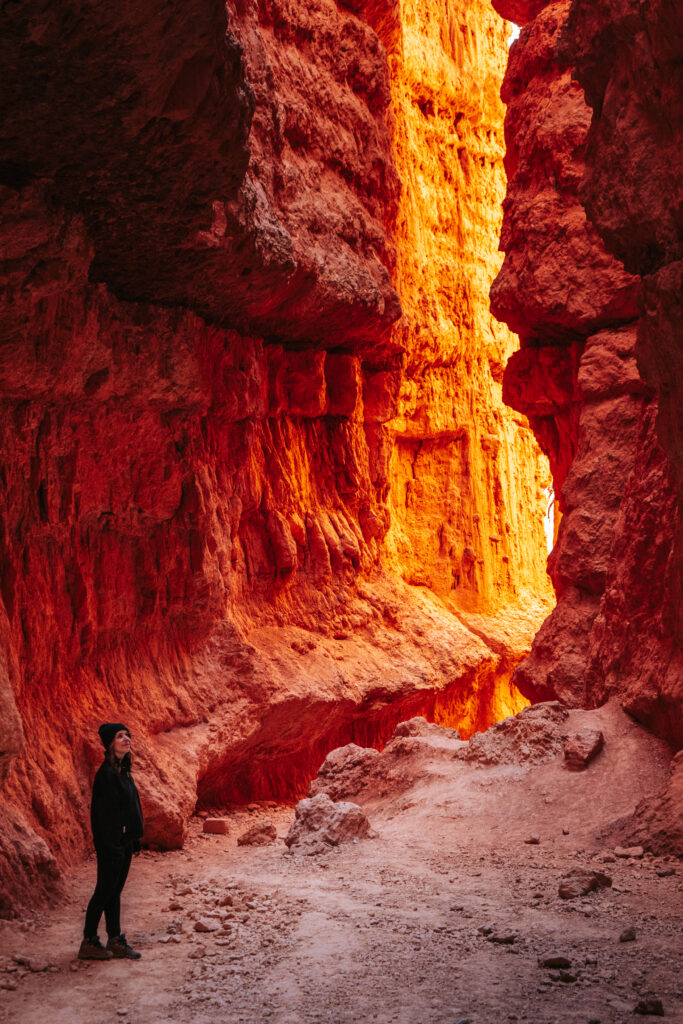
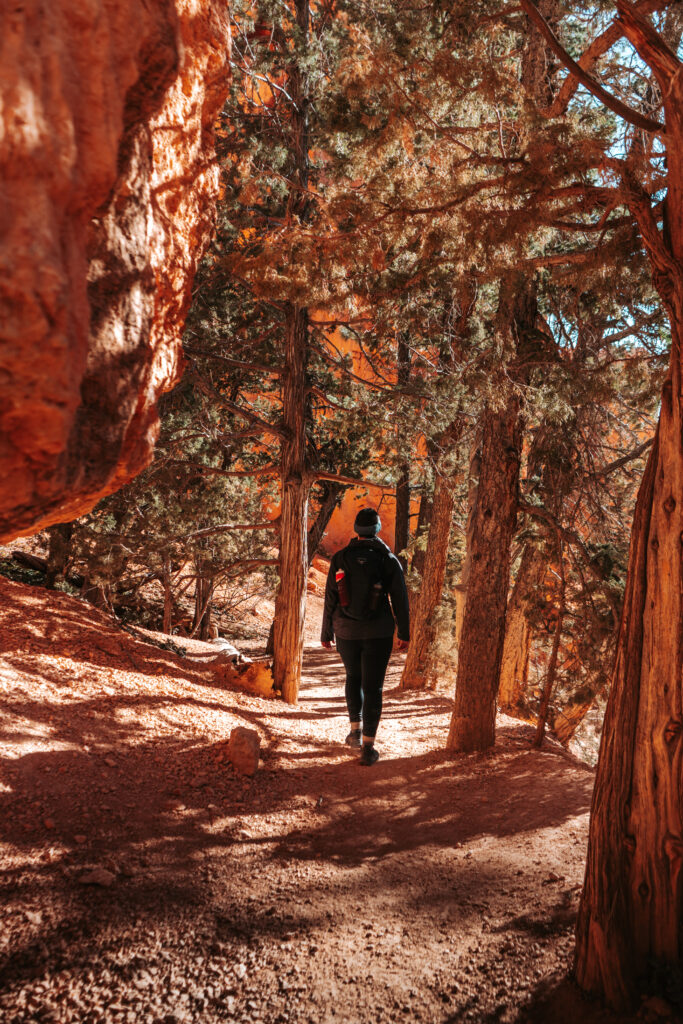
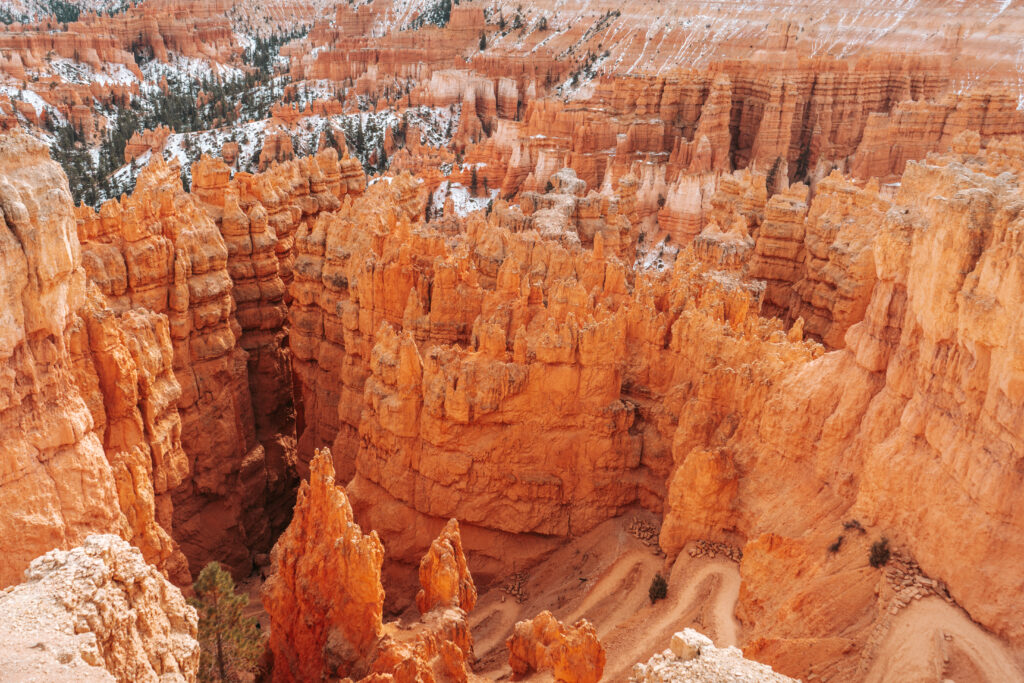
Queen’s Garden Trail
Distance: 1.8 miles (2.9 km) round trip
Difficulty: Easy to Moderate
Highlights: Hoodoo gardens and Queen Victoria formation
The Queens Garden Trail is often described as the easiest trail into Bryce Canyon’s amphitheater, making it perfect for beginners, families, or anyone looking for a gentler hike without sacrificing incredible views. At 1.8 miles (2.9 km) round trip, this trail offers a chance to wander among Bryce’s famous hoodoos while enjoying a gradual descent and plenty of opportunities for stunning photos.
The trail is named after the Queen Victoria hoodoo, which some say resembles the Queen sitting on her throne. The “garden” part of the name comes from the way the hoodoos are scattered throughout the area, resembling an otherworldly garden of stone sculptures.
The Queens Garden Trail is ideal for hikers who want to get up close to Bryce Canyon’s rock formations without facing steep climbs or switchbacks. It’s less intimidating than the Navajo Loop Trail, but it’s just as beautiful—offering sweeping views, fascinating rock formations, and a sense of walking through a natural sculpture garden.
This trail starts at Sunrise Point, where you can take in panoramic views of the Bryce Amphitheater before descending into the canyon. It’s also one of the most popular trails in winter, as its gradual slope makes it easier to navigate when there’s snow on the ground.
Hiker’s tips //This trail feels less dramatic than Navajo Loop but more serene, like a gentle stroll through a fairytale setting. It’s an excellent introduction to Bryce Canyon’s unique geology without feeling too strenuous.
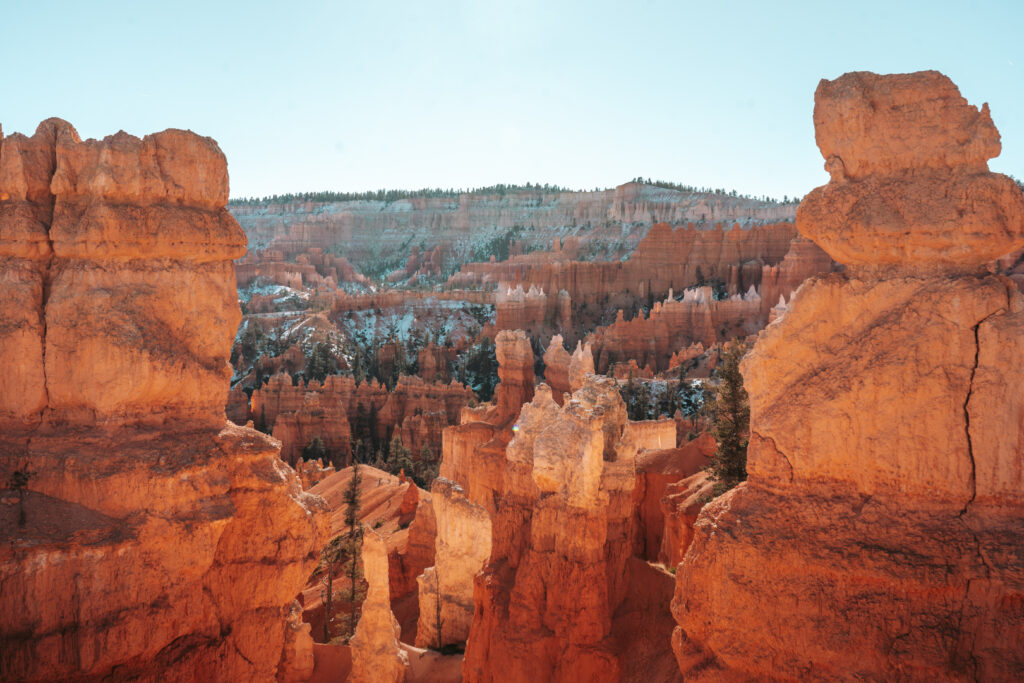
Peekaboo Loop Trail
Distance: 5.5 miles (8.9 km) round trip
Difficulty: Hard
Highlights: Hoodoo windows, arches, and less crowded views
The Peekaboo Loop Trail is one of Bryce Canyon’s most rewarding and adventurous hikes, offering a deeper look into the park’s geological wonders. At 5.5 miles (8.9 km) round trip, this strenuous trail winds through the amphitheater, taking you past towering hoodoos, natural arches, and hidden windows carved into the rock. If you’re up for a challenge and want to escape the crowds, this hike offers the perfect mix of solitude and jaw-dropping scenery.
The Peekaboo Loop Trail gets its playful name from the way it constantly reveals hidden views and surprises around each turn. Unlike the rim trails that showcase Bryce Canyon from above, this trail allows you to dive deeper into the landscape, providing a more intimate look at the hoodoos and rock formations.
The Peekaboo Loop Trail is ideal for hikers who want a more immersive experience in Bryce Canyon. Unlike the shorter and busier Navajo Loop and Queens Garden Trail, this trail ventures deeper into the amphitheater, offering less crowded paths and more dramatic landscapes.
It’s called “Peekaboo” because the trail constantly reveals hidden arches, windows, and hoodoos around every corner—like a treasure hunt where the scenery keeps surprising you.
Hiker’s tips // This loop connects with both the Navajo Loop and Queens Garden Trail, making it a key part of the famous 8-Figure Combination Hike for those wanting an extended adventure.
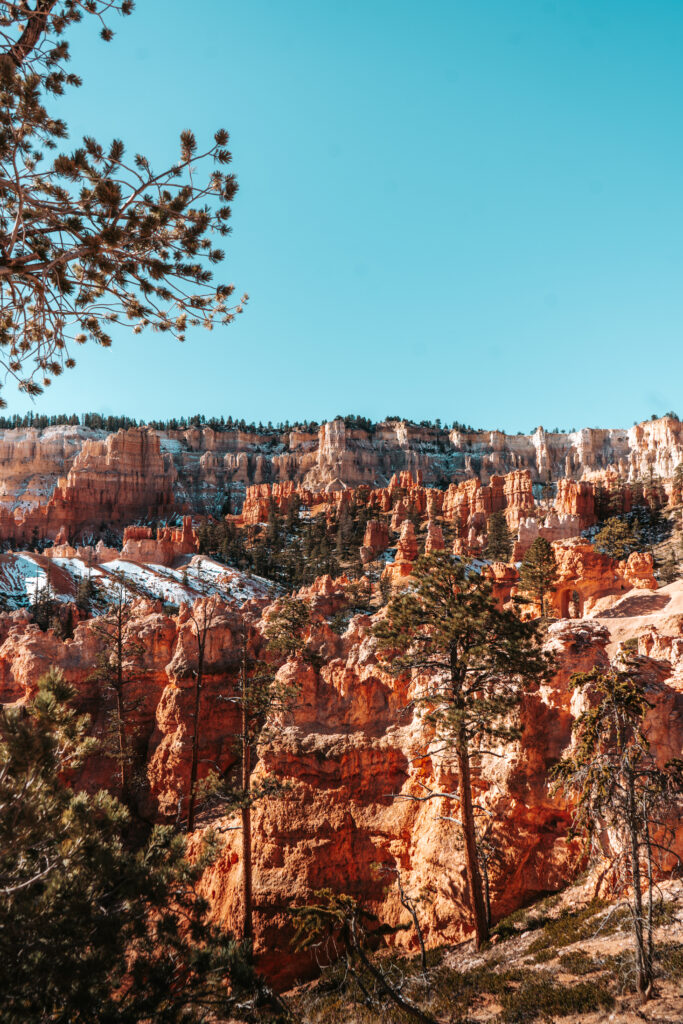
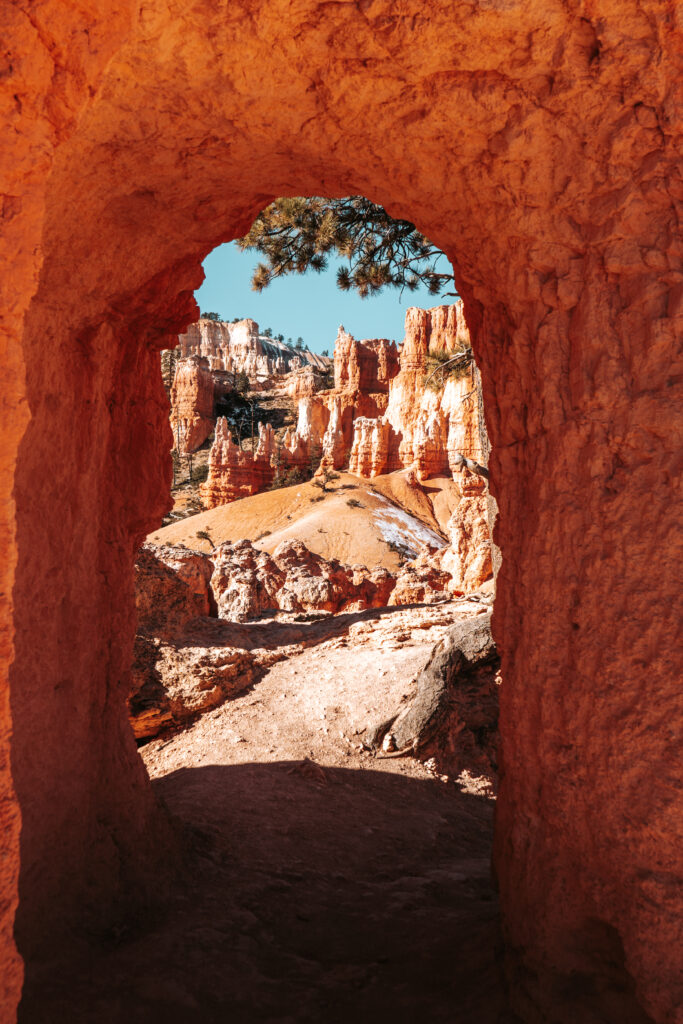
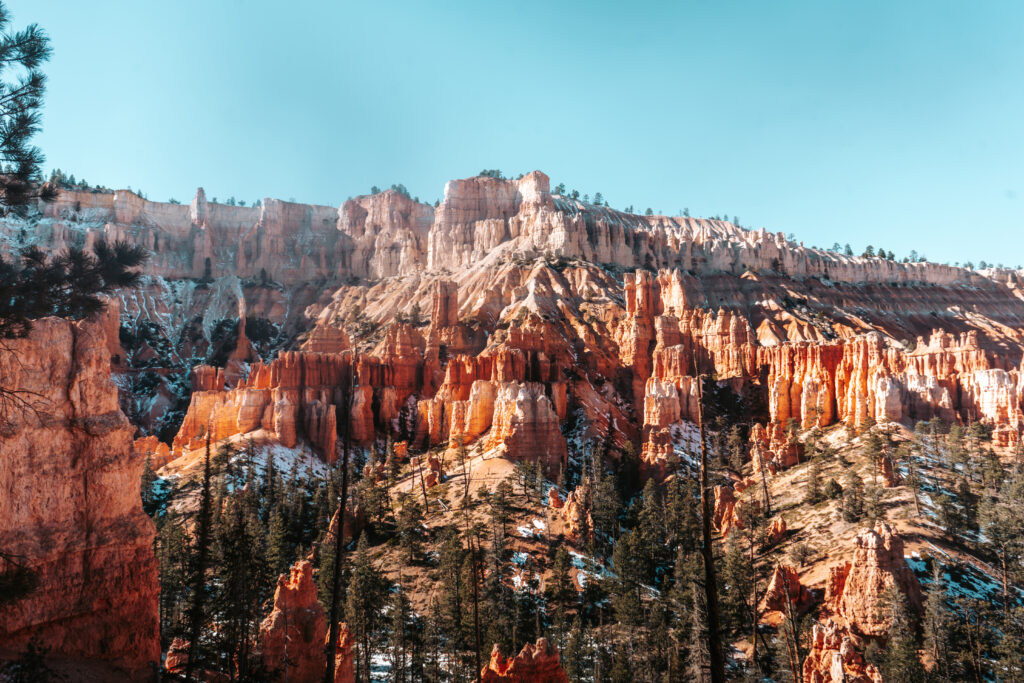
Rim Trail
Distance: 5.5 miles (8.9 km) one way (but you can make it how long or how short as you want)
Difficulty: Easy
Highlights: Stunning views of Bryce Amphitheater
The Rim Trail is the perfect hike for those who want to experience Bryce Canyon’s stunning beauty without descending into the amphitheater. Stretching 5.5 miles (8.9 km) one way from Fairyland Point to Bryce Point, this easy-to-moderate trail follows the edge of the Bryce Amphitheater, offering breathtaking panoramic views at every step.
The Rim Trail offers one of the most flexible hiking experiences in Bryce Canyon. Since it connects several major viewpoints, you can easily choose to hike the entire length or just walk between a few key spots. It’s a great option if you prefer staying on higher ground and want to enjoy sweeping views of the hoodoos without the effort of climbing in and out of the amphitheater.
This trail is also perfect for sunrise and sunset, giving you front-row seats to the canyon as it glows with changing colors throughout the day.
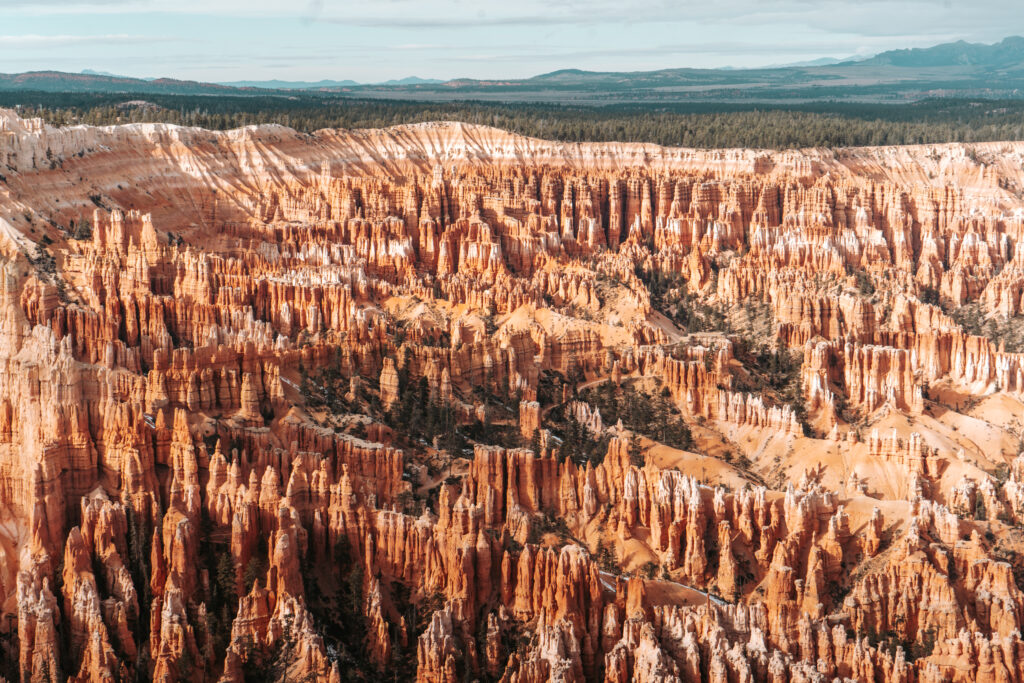
Fairyland Loop Trail
Distance: 8 miles (12.9 km) round trip
Difficulty: Hard
Highlights: Tower Bridge and fewer crowds
The Fairyland Loop Trail is perfect for those who want a longer and quieter hike while still taking in all the iconic Bryce Canyon scenery. Unlike the more popular Navajo Loop and Queens Garden Trail, this hike ventures into a less-visited section of the park, giving it a peaceful and remote feel.
It’s a great choice for those who enjoy immersive landscapes, as the trail winds through massive amphitheaters, hoodoo forests, and panoramic ridges that make you feel like you’re walking through a fantasy world.
Although I didn’t have time to hike the Fairyland Loop Trail during my visit, it’s one I’ll definitely return for based on the glowing reviews from park rangers and other visitors. Its remote beauty, stunning formations, and quiet atmosphere make it a hidden gem for hikers who want to experience Bryce Canyon beyond the main viewpoints.
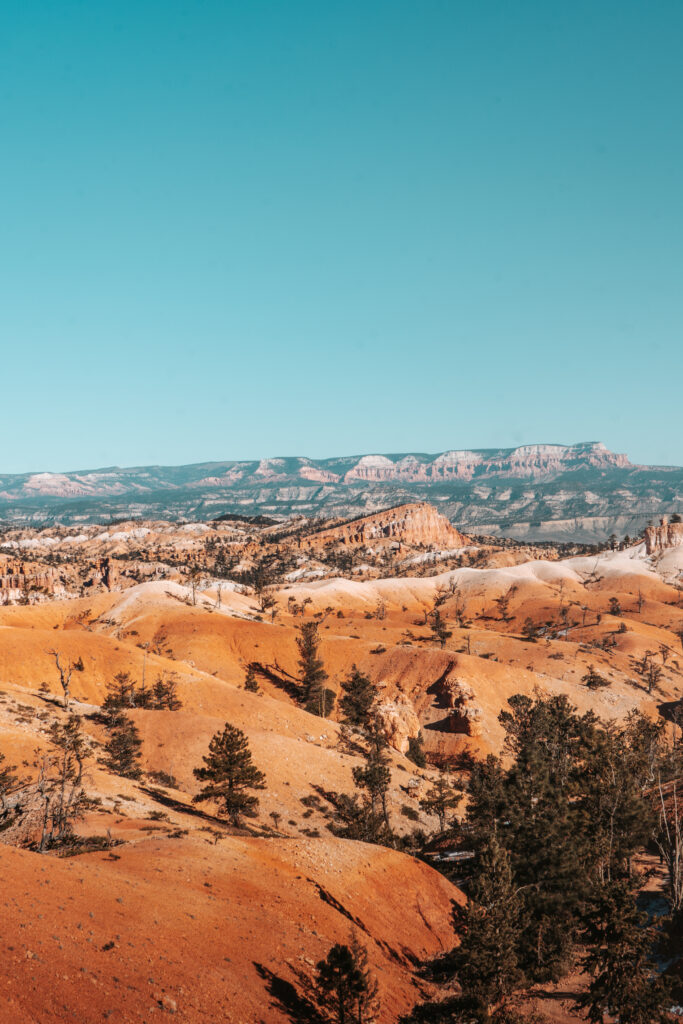
The 8-Figure Combination Hike
Distance: About 6.4 miles (10.3 km)
Difficulty: Moderate to Hard
Highlights: Combines the park’s three most iconic trails for the ultimate experience.
The 8-Figure Combination Trail is, in my opinion, the best way to experience Bryce Canyon National Park—and it’s the hike I chose during my visit. This 6.4-mile (10.3 km) loop combines the Queens Garden Trail, Navajo Loop Trail, and Peekaboo Loop Trail into one unforgettable adventure.
It’s called the 8-Figure Trail because the interconnected paths form a shape that looks like the number 8, allowing hikers to explore Bryce Canyon’s most iconic formations from both above and below. After hiking this trail, I can confidently say it’s a must-do for anyone visiting the park.
If you only have time for one big hike in Bryce Canyon, I can’t recommend the 8-Figure Combination Trail enough. It’s the perfect way to experience everything Bryce Canyon has to offer, from its famous hoodoos and slot canyons to its quieter, more hidden corners. For me, the Peekaboo Loop was the highlight of the entire hike. Its arches, rock windows, and towering formations felt almost otherworldly—like walking through a natural cathedral.
Hiker’s tips // Start at Sunrise Point, descend via Queens Garden, connect to Peekaboo Loop, and finish with Navajo Loop back up to Sunset Point. Be sure to bring plenty of water and snacks!
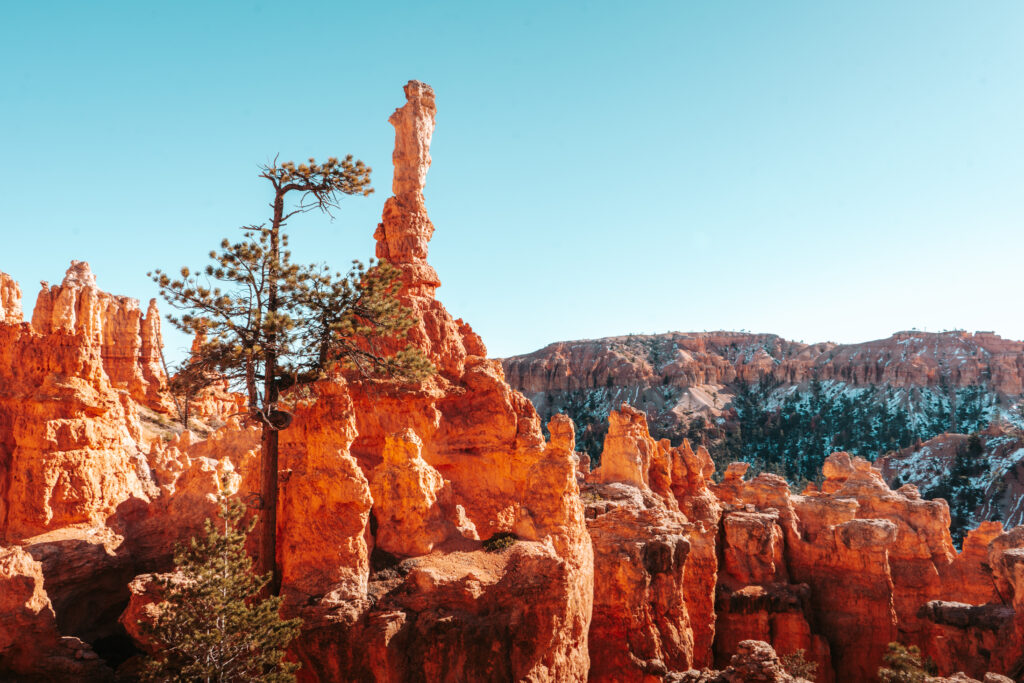
Top Viewpoints You Can’t Miss
One of the best things about Bryce Canyon National Park is how easily accessible its viewpoints are. Most of the park’s top overlooks, including Sunrise Point, Inspiration Point, Bryce Point, and Natural Bridge Point, can be reached directly by car. They require little to no walking, making them perfect for visitors of all abilities or those short on time.
Rainbow Point (Southernmost viewpoint)
Elevation: 9,105 feet (2,775 m)
Rainbow Point marks the highest elevation viewpoint in Bryce Canyon, offering broad vistas that stretch across the amphitheater and into the surrounding desert landscapes. It’s also a starting point for several backcountry hikes, making it a great stop for more adventurous visitors.
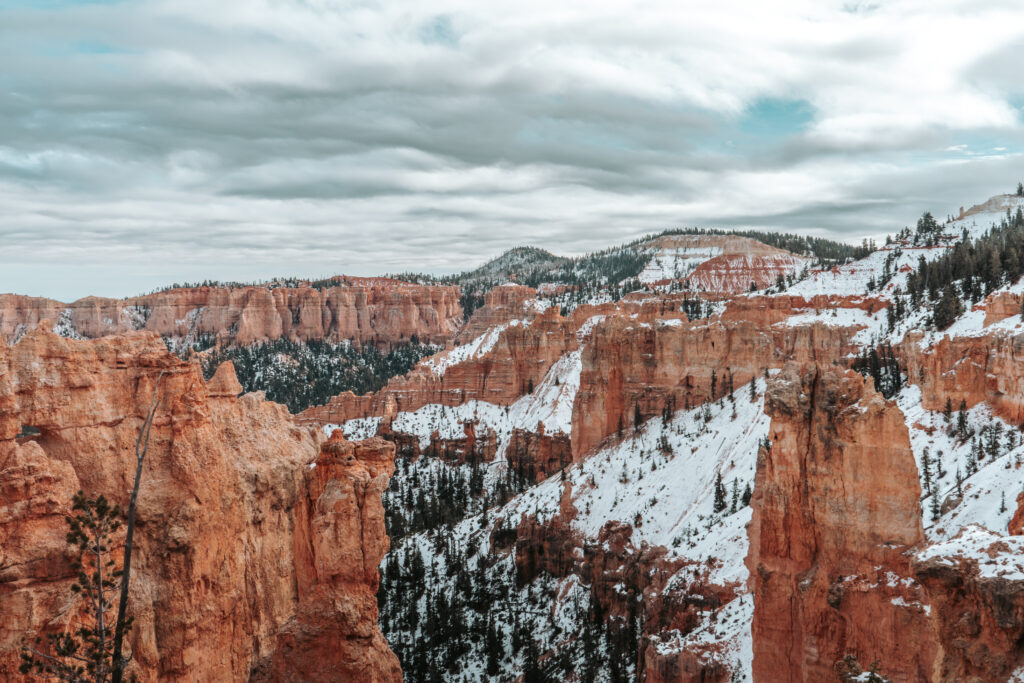
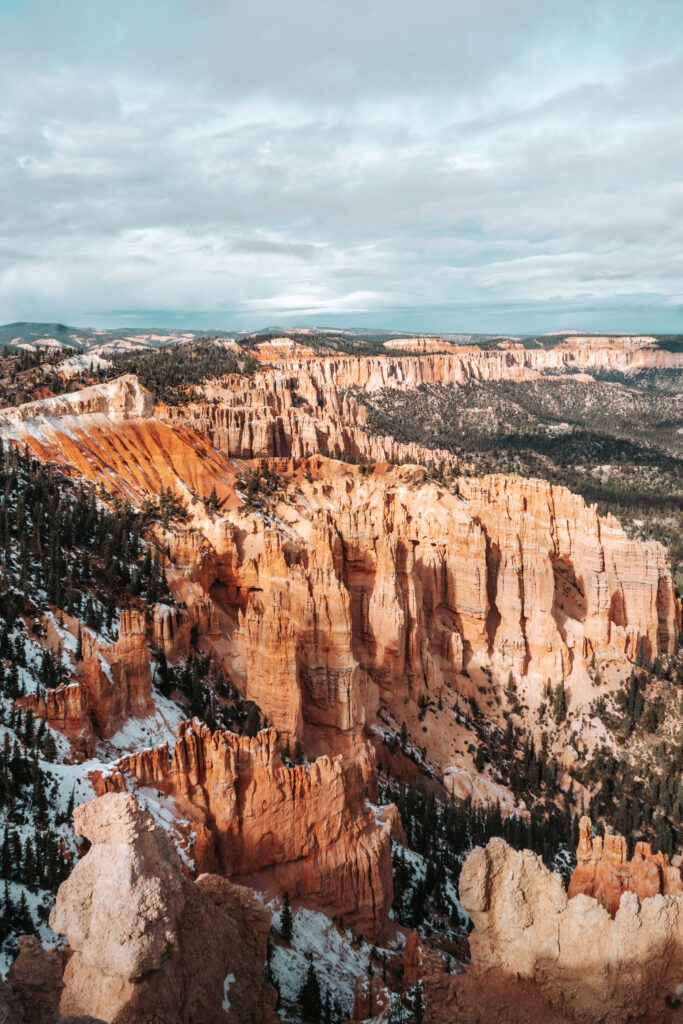
Pondarosa Point
Elevation: 8,904 feet (2,714 m)
Ponderosa Point is a stunning overlook located along Bryce Canyon’s scenic drive, offering visitors a chance to take in elevated views of the park’s dramatic landscape. Sitting at 8,904 feet (2,714 m), it provides a slightly different perspective compared to the amphitheater viewpoints, with sweeping vistas of forests, plateaus, and distant rock formations. This viewpoint is named after the Ponderosa pines that dot the landscape, adding a rich green contrast to the reds and oranges of the canyon below.
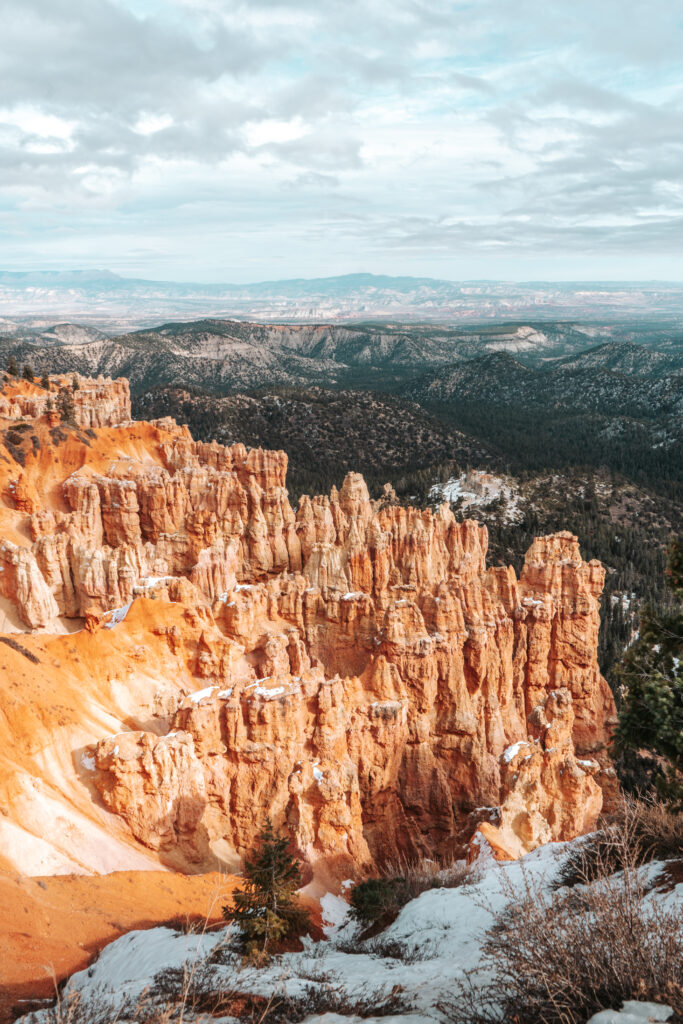
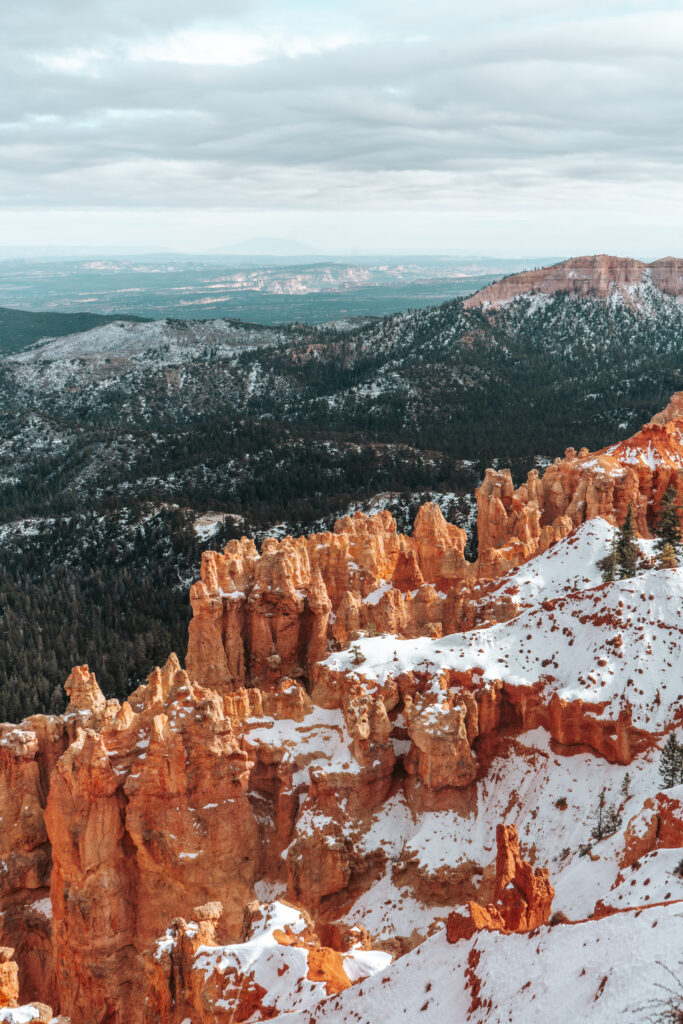
Natural Bridge Point
Elevation: 8,627 feet (2,629 m)
Natural Bridge Point is another remarkable stop along the scenic drive and features one of Bryce Canyon’s most photographed natural formations—the Natural Bridge. This massive 85-foot (26 m) tall arch is made of red limestone and was formed through erosion and weathering over millions of years. Despite its name, it’s technically an arch, not a bridge, as it was carved by the forces of freezing, thawing, and rainwater rather than a flowing stream.
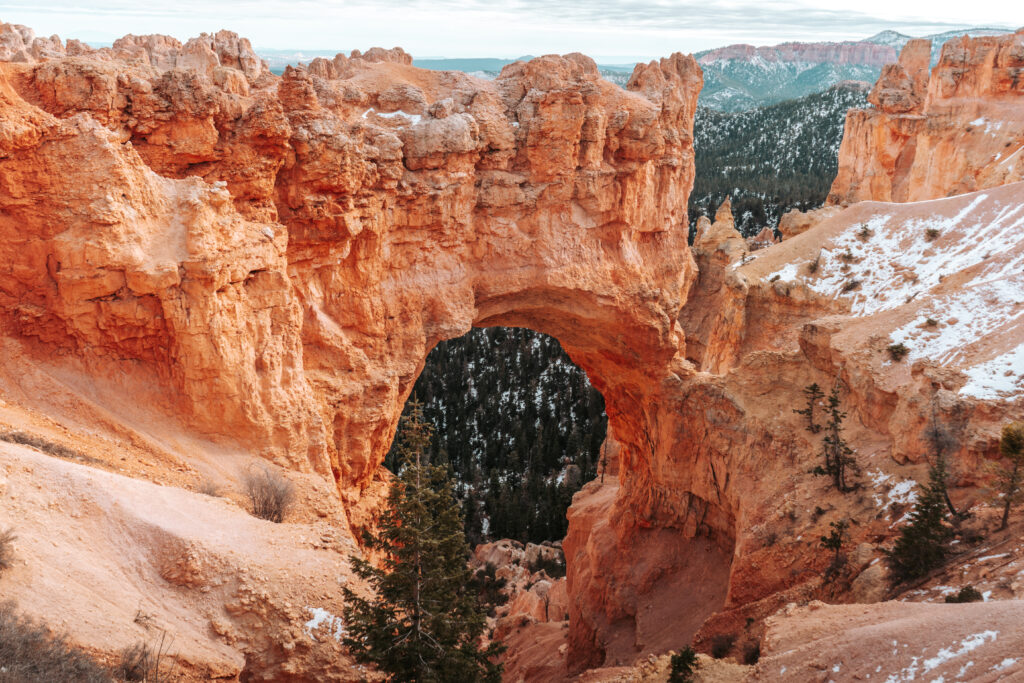
Bryce Point
Elevation: 8,300 feet (2,530 m)
Bryce Point offers 360-degree view of the amphitheater and beyond. It’s particularly popular for sunrise photography, as the light creates a golden glow across the landscape. From here, you can also access the Peekaboo Loop Trail, making it an excellent starting point for hikers. If I had to choose a favorite viewpoint, this would be the one!
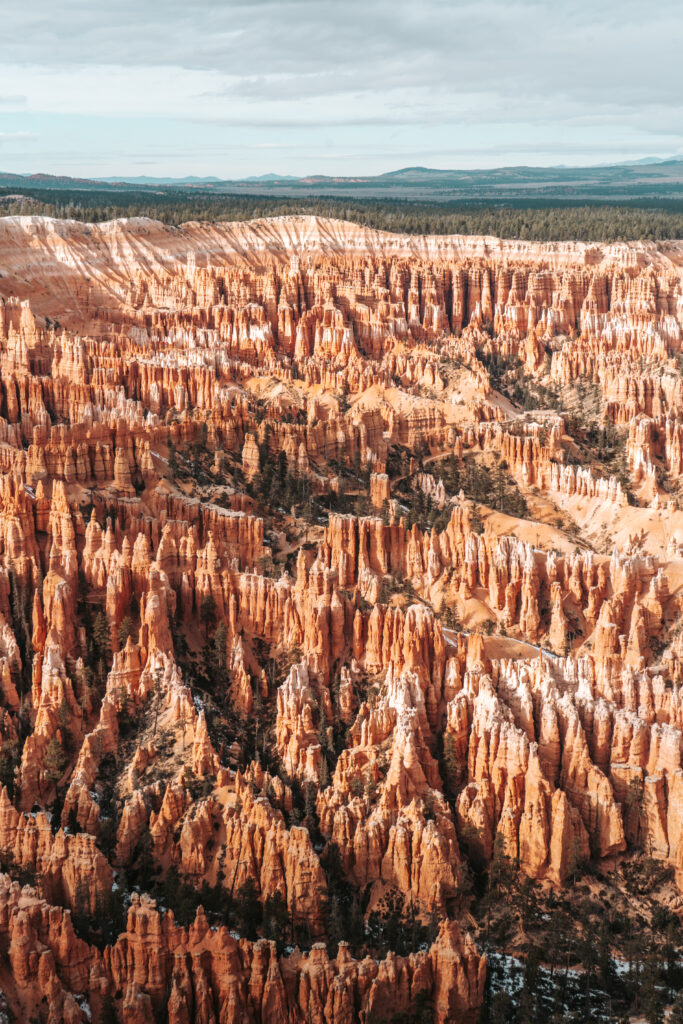
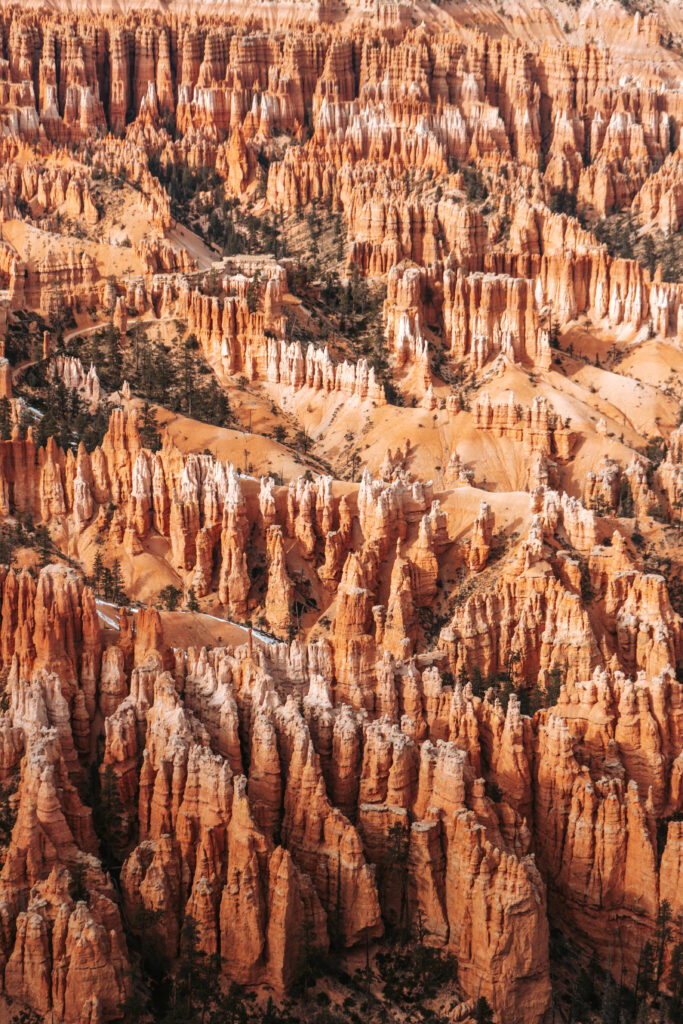
Inspiration Point
Elevation: 8,100 feet (2,469 m)
Inspiration Point lives up to its name by offering sweeping, panoramic views of the amphitheater and the Silent City, a dense cluster of hoodoos that resemble an ancient skyline. This viewpoint is divided into lower, middle, and upper levels, each providing a slightly different perspective. The layered rock formations and dramatic drop-offs make it a must-visit spot for photographers, especially in the soft light of the early morning or late afternoon.
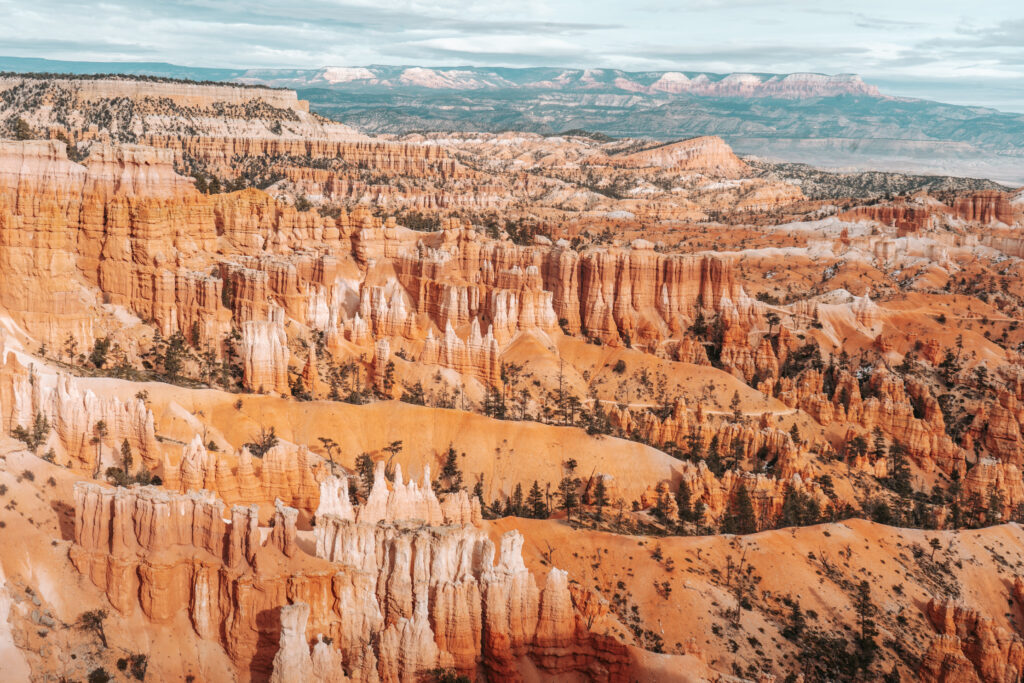
Sunset Point
Elevation: 8,000 feet (2,438 m)
Sunset Point is the go-to spot for capturing golden-hour views in the late afternoon. It’s famous for overlooking Thor’s Hammer, one of Bryce Canyon’s most iconic rock formations. Sunset Point also offers access to the Navajo Loop Trail, making it a great place to combine scenic views with a short hike into the amphitheater. Even if you don’t plan to hike, this viewpoint’s dramatic angles and vibrant colors are well worth a stop.
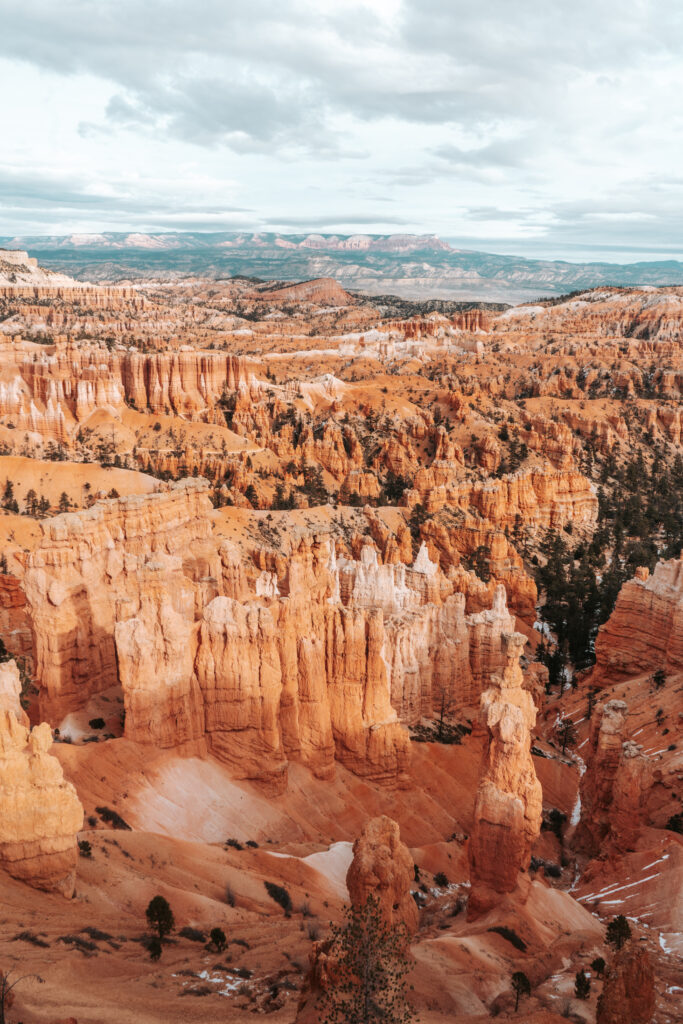
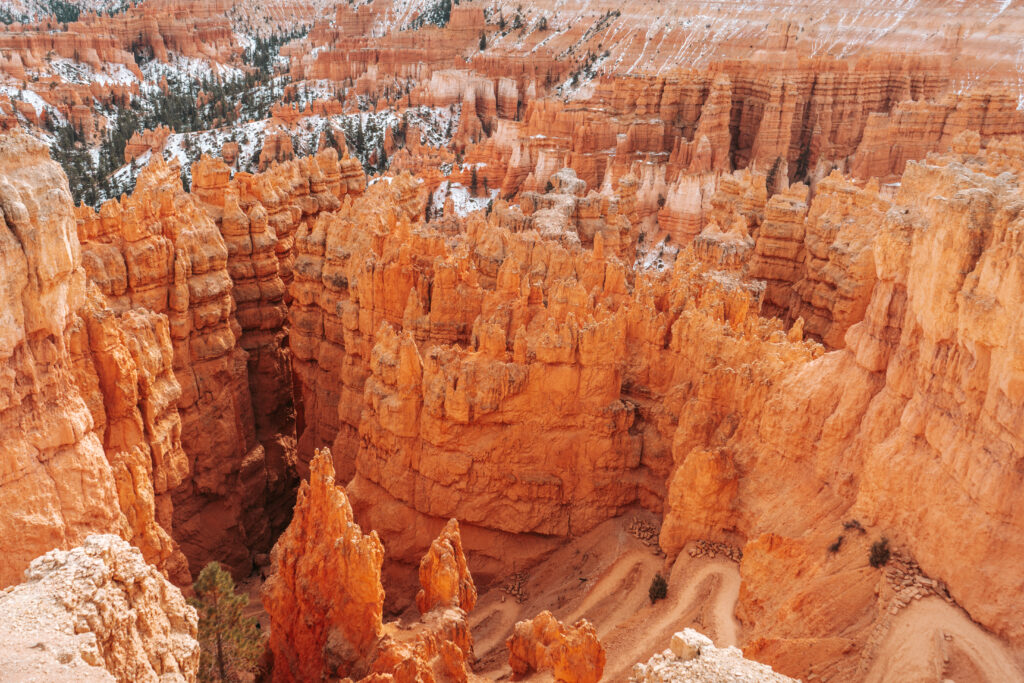
Sunrise Point
Elevation: 8,015 feet (2,443 m)
Sunrise Point may sound like the ultimate spot to watch the sunrise, but despite its name, it’s not actually the best place to catch the morning light in Bryce Canyon. While it does offer beautiful views of the Bryce Amphitheater, formations like Boat Mesa and Sinking Ship, other viewpoints—such as Sunset Point and Inspiration Point—provide better angles for watching the sunrise light up the hoodoos in vibrant shades of red and orange. That said, Sunrise Point is still a great starting point for hikes like the Queens Garden Trail, and its elevated position makes it a popular spot for enjoying the canyon’s beauty at any time of day. It’s also easily accessible by car and requires minimal walking, making it a convenient stop during your visit.
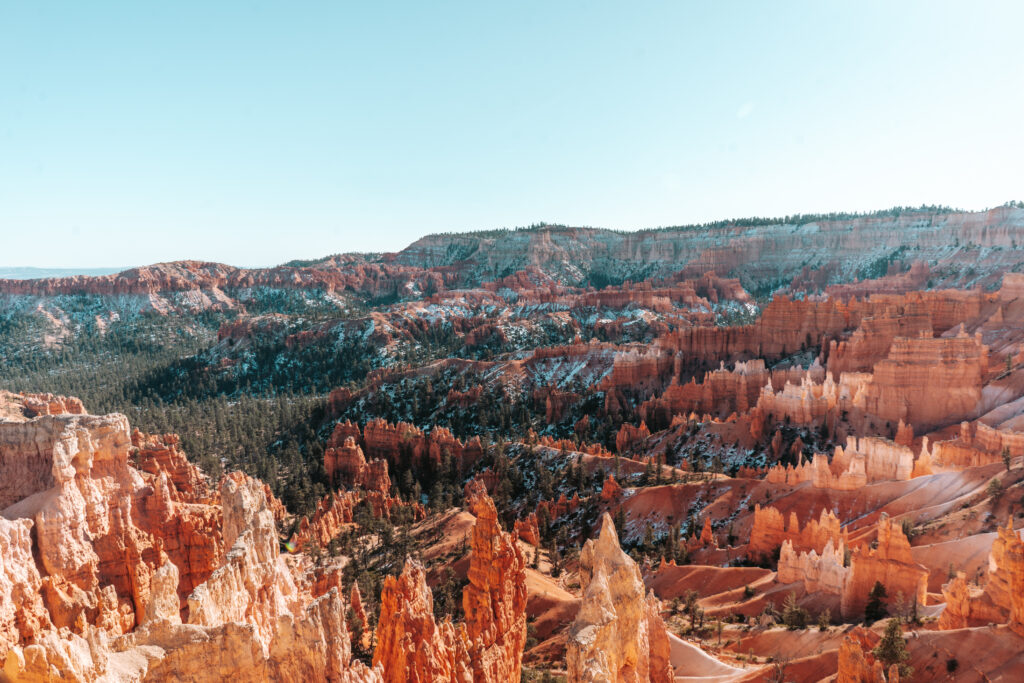
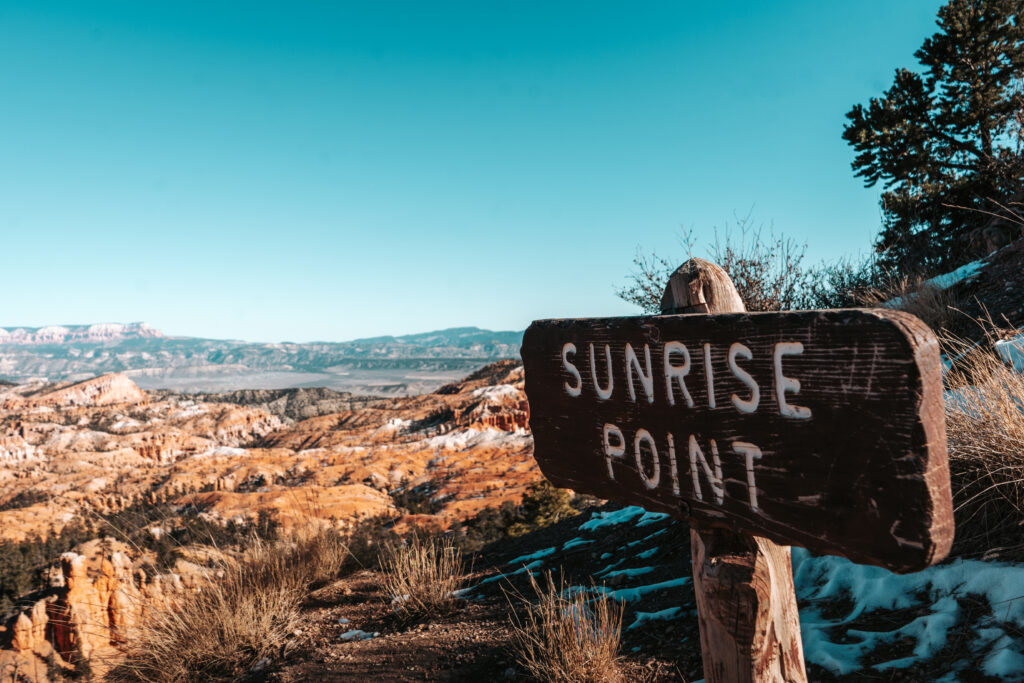
When to Visit Bryce Canyon: Seasons and Weather
Bryce Canyon National Park is a year-round destination, and each season offers a unique experience. From snow-dusted hoodoos in winter to warm, sunny days in summer, the park’s beauty transforms with the weather. However, choosing the best time to visit depends on what kind of experience you’re looking for.
- Spring (March–May) : Temperatures begin to warm up, though snow may still linger in March and early April, especially at higher elevations. Daytime temperatures typically range from 8–18°C (46–65°F), making it comfortable for hiking. Spring is also less crowded than summer, and wildflowers start to bloom, adding color to the trails. However, keep in mind that some areas may be muddy or icy, particularly in early spring, so check trail conditions before heading out.
- Summer (June–August) : The busiest season at Bryce Canyon, attracting visitors with its warm weather and longer days. Daytime highs can reach 27°C (80°F), but the park’s high elevation means temperatures often remain cooler than in other Utah parks. Summer is ideal for hiking and exploring, but it’s also when you’ll encounter larger crowds, especially at popular viewpoints like Sunset Point and Bryce Point. Afternoon thunderstorms are common in July and August, so it’s a good idea to start hikes early in the morning to avoid sudden weather changes.
- Fall (September–November) : Considered one of the best times to visit Bryce Canyon. The crowds thin out, the temperatures cool to a pleasant range of 12–21°C (54–70°F), and the weather is generally dry and clear. It’s perfect for hiking, photography, and enjoying the viewpoints without the summer crowds. By late October and November, you might even catch the first snowfall, adding a dusting of white to the red and orange hoodoos—a truly magical sight.
- Winter (December–February) : Bryce Canyon transforms into a snowy wonderland. I visited in December, and seeing the hoodoos covered in snow was absolutely stunning. The weather during my visit ranged between 5–10°C (41–50°F), which I found perfect for hiking—cool enough to be comfortable while climbing trails but not so cold that it was unpleasant. While temperatures can sometimes drop well below freezing (-9 to 5°C / 15–40°F) later in the season, Bryce Canyon’s winter landscape offers peaceful and uncrowded trails.
Hiker’s tips // If you plan to hike trails like Peekaboo in the Winter, I highly recommend renting ice cleats to stay safe on icy paths. You can rent ice cleats for $10 per day at Ruby’s Inn General Store, located just before the park entrance. I put mine on a few times during the hike!
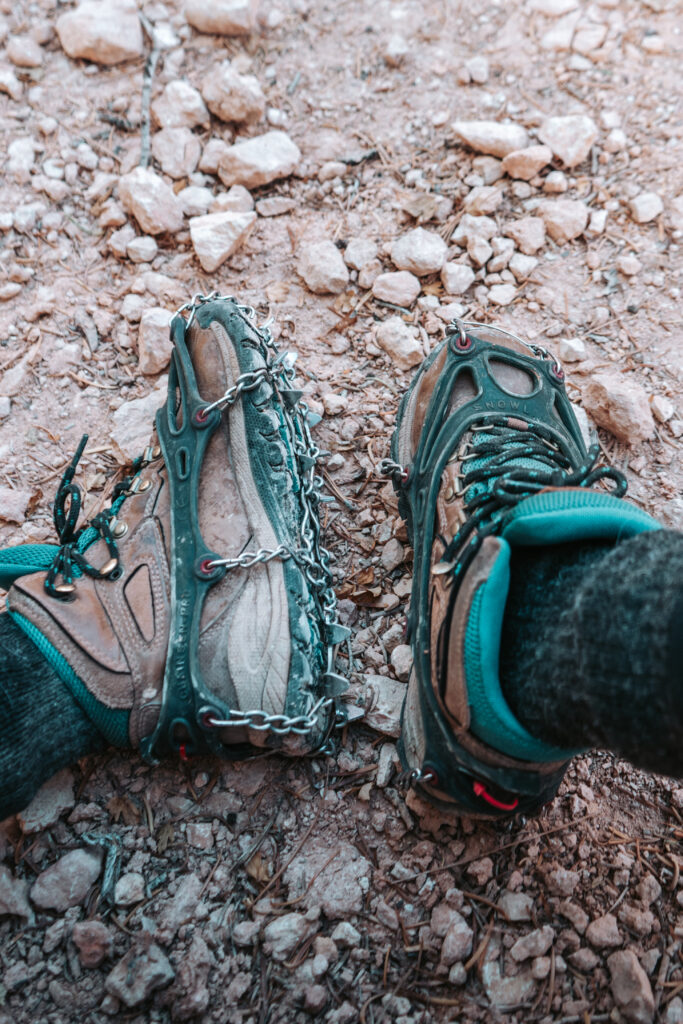
Where to Stay near Bryce Canyon National Park
During my visit to Bryce Canyon National Park, I stayed at Bryce Glamp & Camp, a unique glamping experience located in Cannonville, Utah, approximately 30 minutes from the park entrance. This family-owned retreat offers a blend of luxury and nature, providing an ideal base for exploring the region.
The domes are outfitted with amenities such as private bathrooms, electric fireplaces, premium mattresses, 65″ smart TVs, and WiFi. They are climate-controlled with heating and air conditioning, ensuring comfort in any season. Each dome also includes a kitchenette with a refrigerator, microwave, coffee maker, toaster oven, and hot plate, allowing for convenient meal preparation. Outside, guests can enjoy a private area complete with a BBQ grill, gas firepit, picnic table, and chairs—perfect for evening relaxation and stargazing.
Read More // Want to stay at Bryce Glamp & Camp? Read my full blog post on my own stay and why this is the best place to stay near Bryce Canyon.
The Details
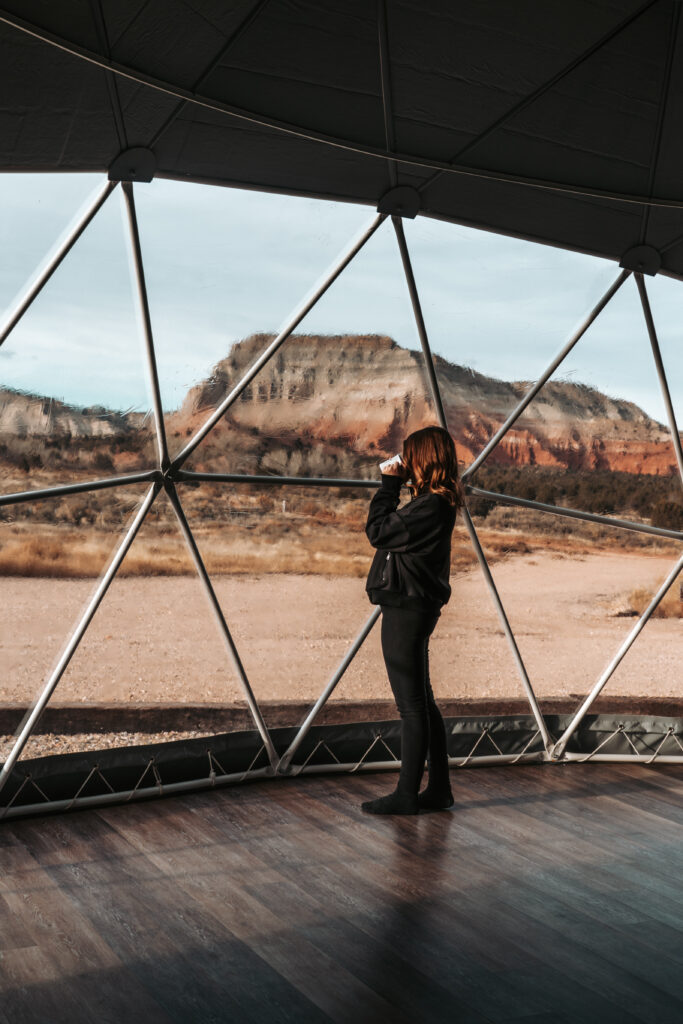
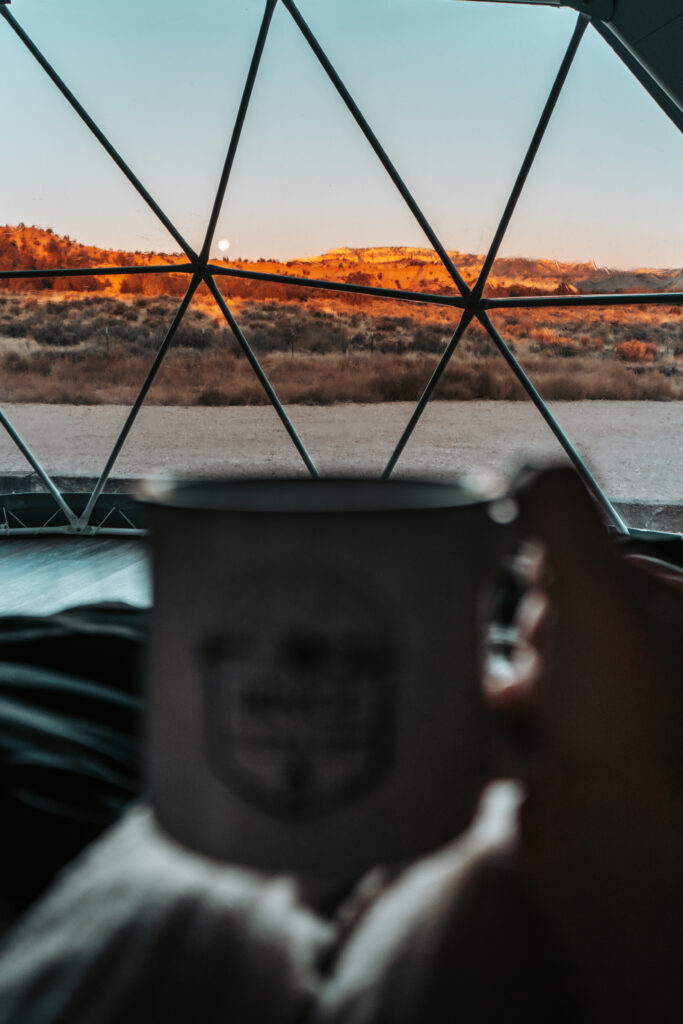
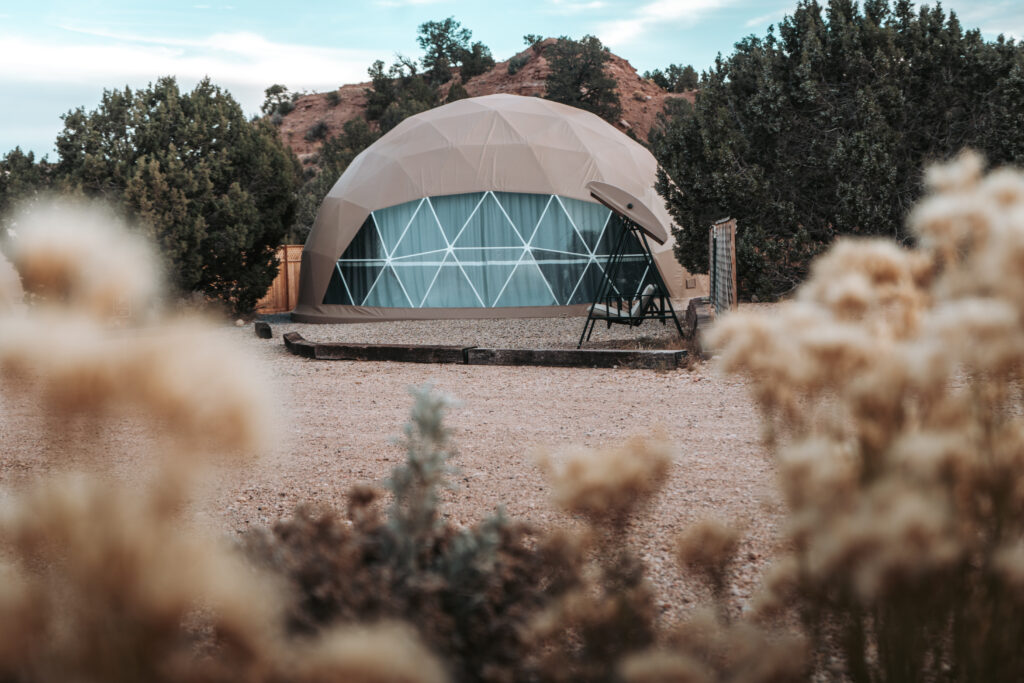
Tips for Visiting Bryce Canyon
Start Early to Avoid Crowds : Bryce Canyon’s viewpoints and trails can get crowded, especially during summer months and weekends. Arriving early not only helps you secure parking but also lets you experience the soft morning light that makes the hoodoos glow in shades of orange and red—perfect for photography.
Dress in Layers : Bryce Canyon’s high elevation (over 8,000 feet) means the weather can change quickly. Mornings and evenings are often chilly, even in summer, while midday temperatures can be warm. In winter, temperatures can drop below freezing. Bring layers, including a jacket, hat, and gloves, especially if visiting in colder months.
Don’t Skip the Scenic Drive : Bryce Canyon’s 18-mile scenic drive offers access to several viewpoints, each showcasing a different perspective of the park. Be sure to stop at key overlooks like Bryce Point, Sunset Point, Natural Bridge Point, and Ponderosa Point. Since these viewpoints are accessible by car and require little to no walking, they’re great for visitors short on time or those who prefer minimal hiking.
Take Advantage of the Shuttle Service (Available April–October) : During peak season, parking can be limited at Bryce Canyon’s most popular spots. The park offers a free shuttle service that runs from April to October, making it easier to get around without the hassle of finding parking. It’s also a great way to reduce traffic and protect the park’s fragile environment.
Rent Ice Cleats in Winter : If you’re visiting in winter, be prepared for snowy and icy trails. Many trails, including Peekaboo Loop, can get slippery, so I highly recommend renting ice cleats at Ruby’s Inn General Store, just outside the park entrance. They cost $10 per day and make hiking in icy conditions much safer and more enjoyable.
Be Prepared for High Elevation : With an elevation ranging from 8,000 to 9,100 feet, Bryce Canyon’s thinner air can cause shortness of breath or fatigue, especially if you’re not used to higher altitudes. Take it slow on hikes, drink plenty of water, and avoid overexertion.
Stay Nearby for Convenience : Staying close to the park, like at Bryce Glamp and Camp, makes it easier to get an early start and enjoy sunrise views without a long morning drive. Accommodations near the park also allow for spontaneous evening visits for stargazing or sunset photography.
How much does it cost to visit Bryce Canyon National Park?
Bryce Canyon National Park has an entrance fee, which is fairly standard for national parks in the U.S. As of now, the cost to enter Bryce Canyon is:
- Vehicle Fee: $35 for a 7-day pass, covering all occupants of a single, non-commercial vehicle.
- Motorcycle Fee: $30 for a 7-day pass, valid for one motorcycle and its riders.
- Individual Fee: $20 per person for a 7-day pass.
During our visit, we opted for the America the Beautiful Annual Pass. At $80, it gives you access to over 2,000 federal recreation sites, including Zion, for an entire year. If you plan on visiting three or more national parks, this is the best option. It’s a great way to save if you’re doing multiple park visits, as it covers the entrance fees at any participating national park and other federal lands.
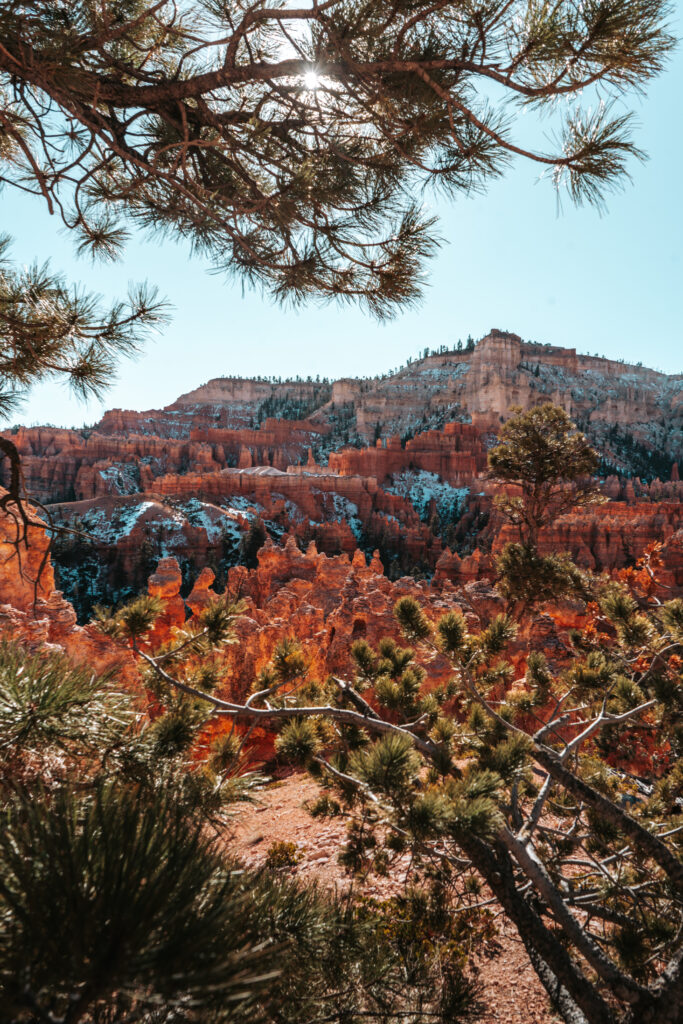
READ THESE BEFORE VISITING MORE OF THE US
US GUIDES |
NATIONAL PARKS | Top things to do in Death Valley National Park, Your Ultimate first-timer guide to Zion National Park
WHERE TO STAY | Where to stay near Zion National Park : Zion White Bison Resort, Bryce Glam & Camp: Best Place to Stay Near Bryce Canyon National Park
PIN THIS FOR LATER
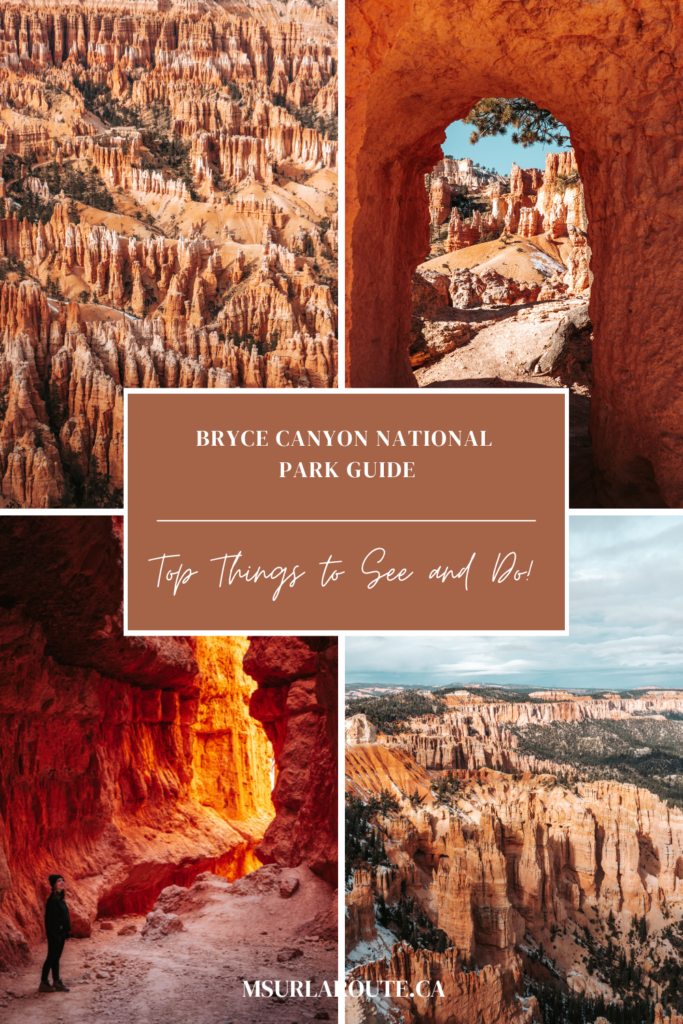
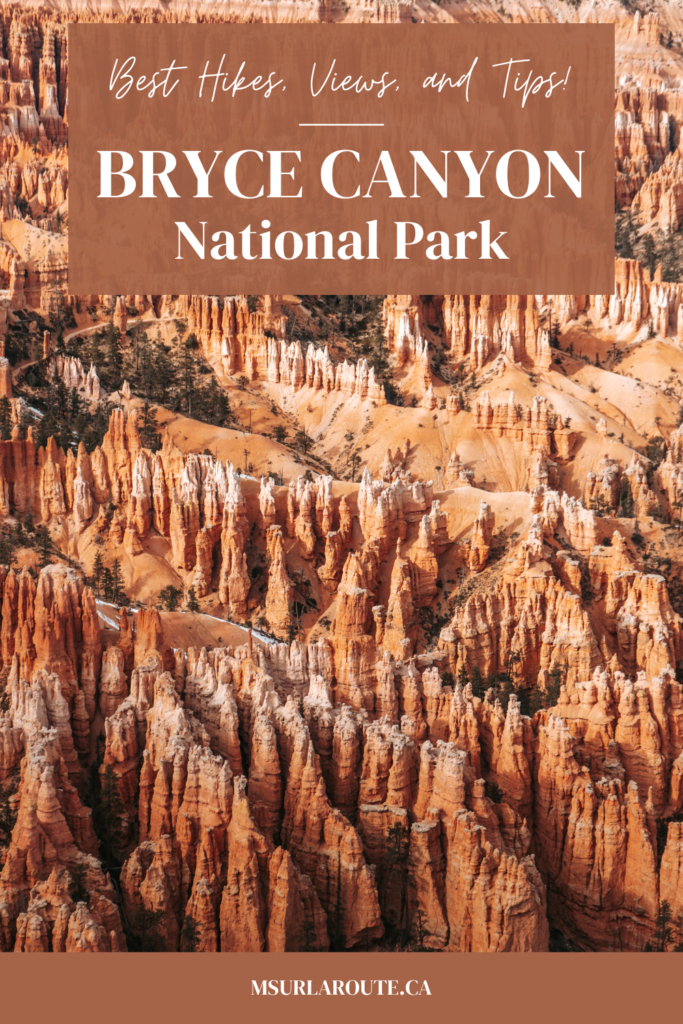
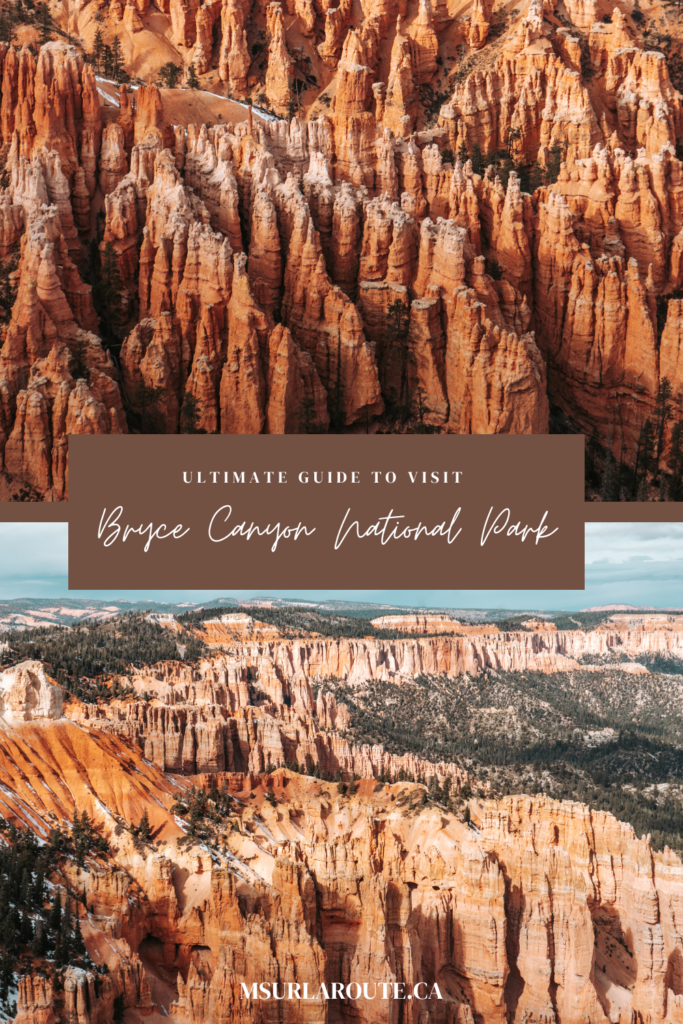
Follow me on Instagram!
Want to touch the southernmost point of mainland Canada? 👇🇨🇦
Then Point Pelee National Park needs to be on your summer list.
From epic sunsets and peaceful marsh boardwalks to migrating birds and butterflies, this park packs a lot into a small space.
In this quick guide:
📍 What to do
🗓️ Best time to visit
⛺ How to camp (hint: it involves oTENTiks)
🦋 And a few cool facts to impress your road trip buddy
Save this for later & tag someone who’d love to stand at the tip of Canada with you 🌊
🇫🇷 La version française de ce texte se trouve dans les commentaires.
#PointPeleeNationalPark #ExploreCanada #TravelOntario #ParksCanada #BucketListTrip #OntarioRoadTrip #NatureEscape #BirdingSeason #WanderOntario

Did you know Peterborough & the Trent-Severn Waterway made the New York Times list of 52 Places to Visit in 2025?
After a weekend exploring the area… I get it. Here’s what makes it one of Ontario’s best summer road trips ⬇️
🌿 Walk with alpacas at a local farm
🚤 Cruise through the world’s highest hydraulic lift lock
🍷 Sip sangria + eat wood-fired pizza at a vineyard
🛶 Visit the brand-new Canadian Canoe Museum
🌄 Hike through caves & forests at Warsaw Caves Conservation Area
🥧 Taste-test butter tarts in Hastings, Campbellford & Lakeside
The perfect Ontario getaway: nature, small towns, good food, and local gems everywhere you turn.
📍 Save this for your next summer road trip!
And tell me below — which stop are you adding to your bucket list?
🇫🇷 Saviez-vous que Peterborough et la voie navigable Trent-Severn figurent sur la liste des 52 destinations à visiter en 2025 selon le New York Times ?
Après un week-end à explorer la région… je comprends tellement pourquoi. Voici pourquoi c’est un road trip incontournable en Ontario cet été ⬇️
🌿 Marcher avec des alpagas dans une ferme locale
🚤 Naviguer sur la plus haute écluse hydraulique au monde
🍷 Boire de la sangria et déguster une pizza au feu de bois dans un vignoble
🛶 Visiter le Musée canadien du canot
🌄 Explorer les sentiers et les grottes du parc Warsaw Caves
🥧 Et bien sûr, faire le plein de tartes au beurre dans les charmants villages de Hastings, Campbellford et Lakeside
Le combo parfait : nature, petites villes, bouffe locale et histoire à chaque détour.
📍 Sauve ce guide pour ton prochain road trip d’été en Ontario !
Et dis-moi en commentaire : quelle activité te tente le plus ?
#discoveron
@ontariotravel and @kawarthas_northumberland
#PeterboroughOntario #TrentSevernWaterway #OntarioRoadTrip #ExploreOntario #SummerInOntario #HiddenGemsOntario #CanadianTravel

These Ontario spots understood the assignment… Saunas in the forest, hot tubs with a view, outdoor soaks under the stars, we’ve got it all!
Here are 6 places where the spa setup is reason enough to book the trip:
1. Aux Box (Huntsville)
2. The Baltic by Fort Tree House Co. (Minden)
3. Back Forty Glamping (Meaford)
4. Anupaya (Deep River)
5. Tiny Stays (Prince Edward County)
6. The June Motel (Beaver Valley)
Tag someone who owes you a spa weekend 💆♀️
🇫🇷 La version française de ce texte se trouve dans les commentaires
#OntarioStays #GlampingOntario #WeekendGetaway #SaunaVibes #HotTubGoals #OntarioSpas #TinyCabins #TravelOntario

I’m on a mission to put Belleville on the map for your Ontario summer adventures 🌞
This is way more than just a drive-by on the 401. Think: charming town vibes, scenic hikes, amazing food (I’m still dreaming about those perogies), and… turtles. 🐢
✨Here’s what I did (don’t forget to save the reel for the full breakdown!):
📍Explored downtown + coffee at Benji’s
🐢 Turtle Pond sanctuary
🥟 Lunch at Kafana (get the perogies!)
🌲 Hiked up Sager Tower (located in Quinte West just a short drive away)
🌮 Dinner at Pop-Ups on the Bay
🍓 Smoothies, wildlife, breweries & more on Day 2
🏖 Bonus: Presqu’ile for a beach day just 35 minutes away.
For this visit, I stayed at the Holiday Inn Express Belleville, perfectly located for all your Bay of Quinte adventures. 👌
Save this for your next summer roadtrip & tag someone who needs a mini escape!
🇫🇷 La version française de ce texte se trouve dans les commentaires
*made in partnership with Bay of Quinte Tourism*
#VisitBelleville #BayofQuinte #OntarioGetaways #HiddenGemsOntario #ExploreOntario #WeekendTripIdeas #MsurlarouteAdventures

Everyone visits Banff, but just an hour away, there’s also this. 👀
Grassi Lake in Kananaskis might just be one of the most underrated hikes in Alberta.
It’s short, it’s scenic, and the turquoise water? Totally unreal.
💦 Take the interpretive trail for waterfalls and forest views
⛰️ End at a lake so vibrant it looks photoshopped
So if you’re heading to the Rockies this summer, don’t sleep on Kananaskis.
Some of the best views are just off the radar.
💬 Been to Kananaskis or still on your list?
💾 Save this if you’re planning an Alberta trip!
🇫🇷 La version française est dans les commentaires! ⬇️
#GrassiLake #KananaskisCountry #AlbertaRoadTrip #HiddenGemsAlberta #ExploreKananaskis #HikingAlberta #BanffVsKananaskis #CanadianRockies #SummerInAlberta

